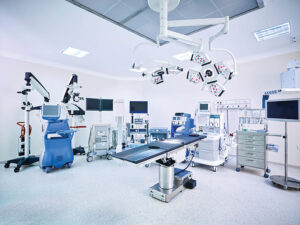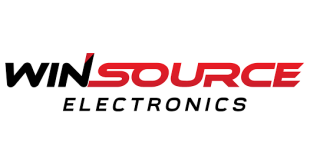Not long ago in hospitals and other critical care facilities, you were greeted with a large, ominous warning sign the moment you walked through the entrance doors to refrain from cell phone use due to possible medical equipment malfunction or interruption.
Today, patients and visitors are free to use mobile phones and devices without fear of interfering with medical equipment, but there’s still a long way to go to reduce electromagnetic emissions and electromagnetic compatibility (EMI/EMC) issues in medical devices.
Medical devices require complex analysis of the EMI/EMC regulations used for medical equipment and system certification. There are many new aspects that need to be addressed since medical devices are no longer used in just a hospital setting. With the increase of wearable medical technology, patients can theoretically be anywhere in the world. Therefore, EMI/EMC compliance testing needs to address the location of “end use” such as in the home healthcare environment and emergency transportation considerations such as automobiles and air ambulances.
Medical device design requirements
The primary EMI/EMC standard for medical electrical equipment and systems is IEC 60601-1-2. Developed by the International Electrotechnical Commission, this global standard applies to the basic safety and essential performance of medical equipment and systems in the presence of electromagnetic disturbances, and to electromagnetic disturbances emitted by equipment and systems.
It also recognizes that RF wireless radio communications equipment (mobile phones, Wi-Fi and biotelemetry) can no longer be prohibited from the patient environment and medical systems and equipment.
However, the standard falls short of defining EMI/EMC test requirements for special environments and points to manufacturers addressing special environments in the risk assessment.
Remember, the difference between emissions and immunity tests are that the emissions requirement is concerned with the amount of electromagnetic energy emitted from your device, while the immunity requirement is concerned with how susceptible your device is to electromagnetic energy existing in the location of end use. This includes energy being emitted from surrounding devices.
Current EMI/EMC standards for medical electrical equipment and systems in special environments
- IEC 60601-1-2 – The basic document addresses emissions requirements for professional health care and home healthcare environments. Requirements are determined based on CISPR 11, IEC 61000-3-2 and IEC 61000-3-3 based on the environments of intended use.
- IEC 60601-1-2 – The basic document addresses immunity requirements for professional health care and home healthcare environments
- IEC 60601-1-2 – The basic document addresses immunity only in the automotive environment by including test requirements to ISO 7637-02 on direct current power inputs. This is being applied for both general automobile and ambulatory use.
- IEC 60601-1-2 – The basic document addresses immunity testing for environments near RF wireless radio communications equipment.
- Manufacturers should consider applying the emissions requirements of CISPR 25 and ISO 7637-2 for automotive environments. This is being used for both general automobile and ambulatory use.
- Manufacturers should consider applying the emissions requirements of ISO 7137, RTCA DO-160 and EUROCAE ED-14 for aircraft environments. This is being used for both general aviation and medical helicopter use.
- Manufacturers should consider applying the emissions and immunity requirements of IEC 62236-1 for railway environments.
- Manufacturers should consider applying ANSI C63.27 for coexistence of wireless systems equipment (cell phones, Wi-Fi and biotelemetry). This is being used to ensure that medical devices that incorporate an RF transmitter AND are used near each other operate correctly in any environment.
- Product-specific standards exist for specific types of medical electrical equipment and systems (endoscopic, infusion pumps, electrocardiograph, ultrasonic equipment etc.) that must be considered. In many cases, these standards alter the basic requirements within IEC 60601-1-2.
Parker Chomerics Test Services, in association with Parker Chomerics Applications Engineering, can assist in determining what standards should be applied to your medical electrical equipment and systems and help ensure compliance with the requirements. Our extensive experience in solving EMI/EMC test failures will result in manufacturable solutions that will reduce your time to market.
Learn about Parker Chomerics products and solutions for Life Science applications here.
 CIE Components in Electronics
CIE Components in Electronics


